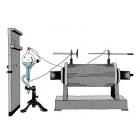The discovery of the x-ray marks the start of medical imagery for diagnostic purposes. The ability to look inside a living body revolutionized the way we look at medicine and human anatomy. To cite an example: in the former German Empire, up to 120,000 people died of tuberculosis by the end of the nineteenth century. Mass x-ray examinations, which were in part mandatory until 1983, played a crucial part in the identification and control of this illness. Nowadays it is difficult to imagine arriving at a diagnosis without any pictorial evidence of the medical findings.
Life expectancy is increasing worldwide due to better nutrition and improved medical care. However, a new “Anthropocene” sickness is becoming a problem: obesity. In OECD countries, every second person is overweight; every sixth person is obese.
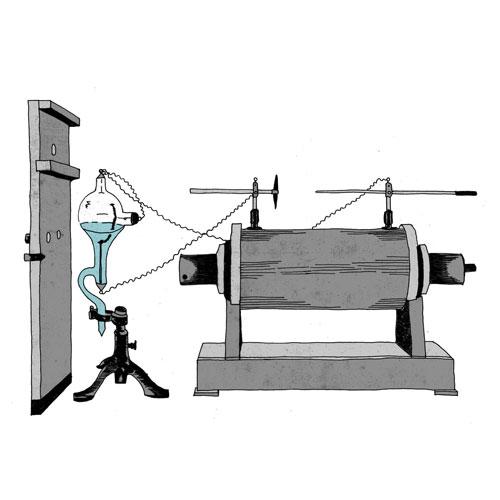
Drawn by René Thoms , 2014.
 This work is licensed under a Creative Commons Attribution-NonCommercial-NoDerivatives 4.0 International License.
This work is licensed under a Creative Commons Attribution-NonCommercial-NoDerivatives 4.0 International License.
X-rays
Text and images by René Thoms
University of the Arts (UdK), Berlin

X-Rays
“Ahhh cool! Look.”
“It´s from Mexico.”
X-Rays
“Ahhh cool! Look.”
“It´s from Mexico.”
Drawn by René Thoms , 2014.  This work is licensed under a Creative Commons Attribution-NonCommercial-NoDerivatives 4.0 International License.
This work is licensed under a Creative Commons Attribution-NonCommercial-NoDerivatives 4.0 International License.
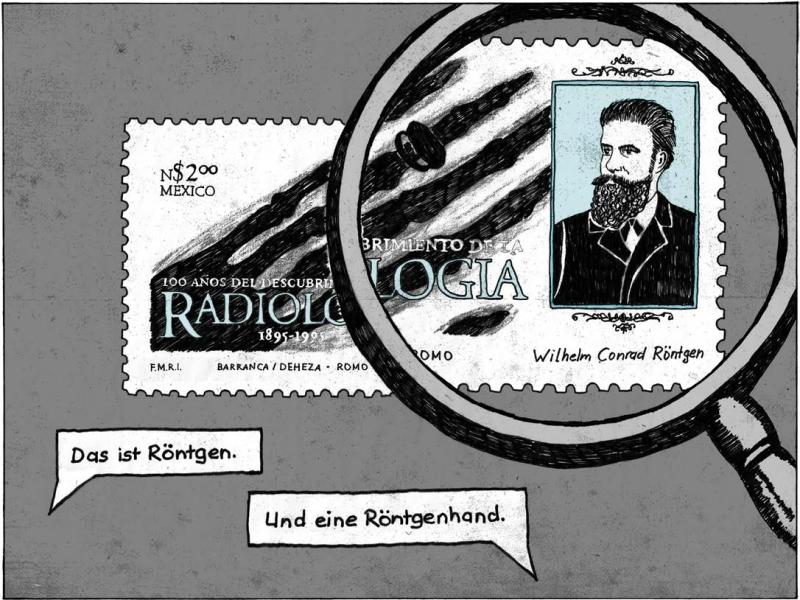
“That’s Mr. Röntgen.”
“And an x-rayed hand.”
“That’s Mr. Röntgen.”
“And an x-rayed hand.”
Drawn by René Thoms , 2014.  This work is licensed under a Creative Commons Attribution-NonCommercial-NoDerivatives 4.0 International License.
This work is licensed under a Creative Commons Attribution-NonCommercial-NoDerivatives 4.0 International License.

“Röntgen was an inventor. He discovered these rays that allow us to look inside the human body. He won the Nobel Prize for it.”
“Röntgen was an inventor. He discovered these rays that allow us to look inside the human body. He won the Nobel Prize for it.”
Drawn by René Thoms , 2014.  This work is licensed under a Creative Commons Attribution-NonCommercial-NoDerivatives 4.0 International License.
This work is licensed under a Creative Commons Attribution-NonCommercial-NoDerivatives 4.0 International License.

“Yeah, one time, a guy came to the hospital my mom works at. He had pair of scissors in his stomach. This is what it looked like.”
“Yeah, one time, a guy came to the hospital my mom works at. He had pair of scissors in his stomach. This is what it looked like.”
Drawn by René Thoms , 2014.  This work is licensed under a Creative Commons Attribution-NonCommercial-NoDerivatives 4.0 International License.
This work is licensed under a Creative Commons Attribution-NonCommercial-NoDerivatives 4.0 International License.
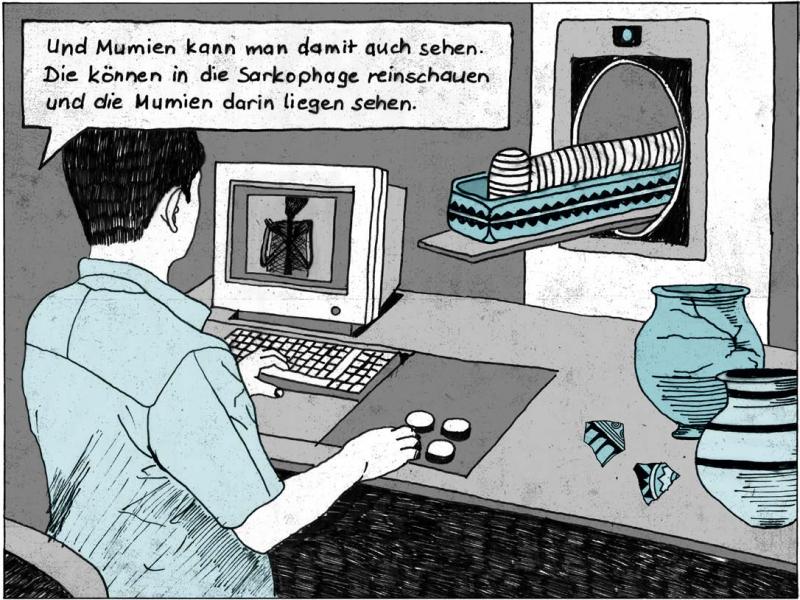
“You can also see mummies with x-ray technology. They can look in the sarcophagi and see the mummies lying inside.”
“You can also see mummies with x-ray technology. They can look in the sarcophagi and see the mummies lying inside.”
Drawn by René Thoms , 2014.  This work is licensed under a Creative Commons Attribution-NonCommercial-NoDerivatives 4.0 International License.
This work is licensed under a Creative Commons Attribution-NonCommercial-NoDerivatives 4.0 International License.

“Yeah. And when you take a plane, they x-ray your luggage to look for bombs so the planes are not blown up in the air.”
“Hahaha, the plane in the air.”
“Yeah. And when you take a plane, they x-ray your luggage to look for bombs so the planes are not blown up in the air.”
“Hahaha, the plane in the air.”
Drawn by René Thoms , 2014.  This work is licensed under a Creative Commons Attribution-NonCommercial-NoDerivatives 4.0 International License.
This work is licensed under a Creative Commons Attribution-NonCommercial-NoDerivatives 4.0 International License.
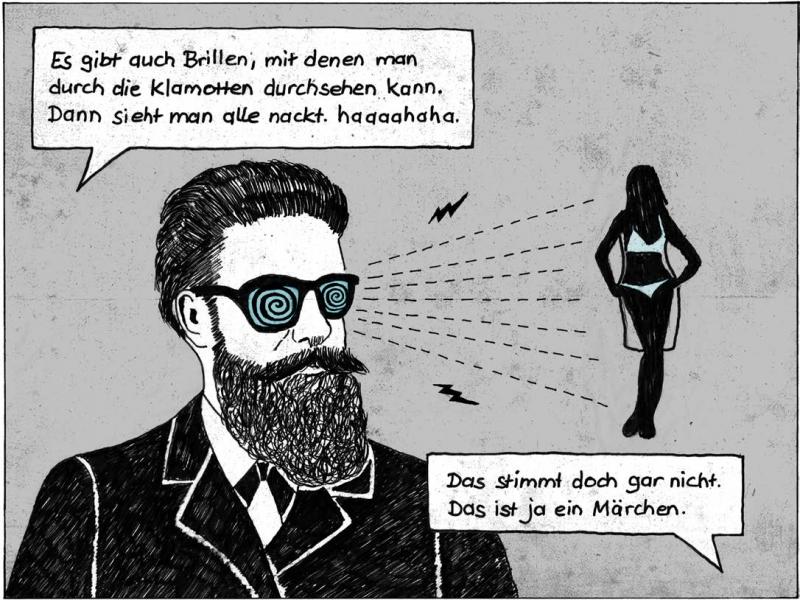
“There are also glasses that let you see through clothing—you can see everybody naked! Haaaahaha.”
“No way. That a lie!”
“There are also glasses that let you see through clothing—you can see everybody naked! Haaaahaha.”
“No way. That a lie!”
Drawn by René Thoms , 2014.  This work is licensed under a Creative Commons Attribution-NonCommercial-NoDerivatives 4.0 International License.
This work is licensed under a Creative Commons Attribution-NonCommercial-NoDerivatives 4.0 International License.
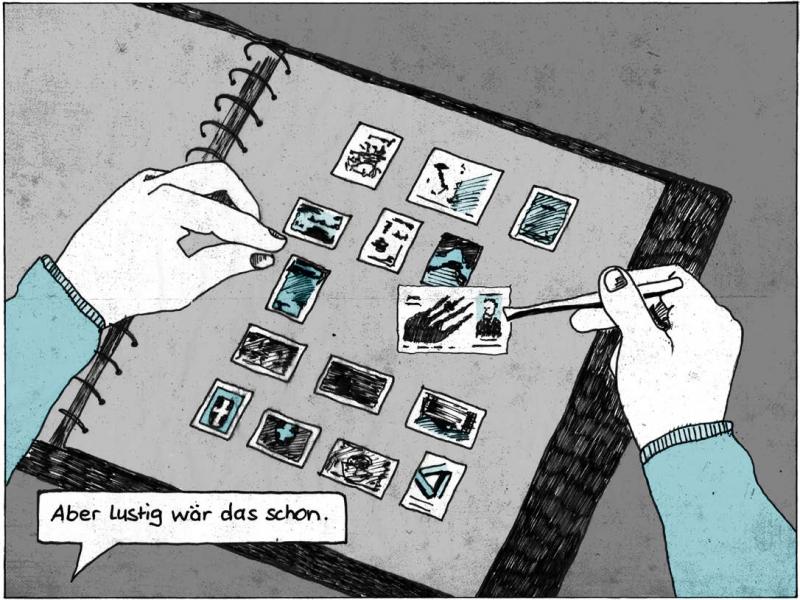
“But it sure would be funny.”
“But it sure would be funny.”
Drawn by René Thoms , 2014.  This work is licensed under a Creative Commons Attribution-NonCommercial-NoDerivatives 4.0 International License.
This work is licensed under a Creative Commons Attribution-NonCommercial-NoDerivatives 4.0 International License.
Artist’s comment:
The most mundane things become exciting when we look at their history and their origins. Röntgen’s discovery was almost accidental, yet it is hard to imagine the world without it today. It has influenced the way people think. Röntgen did not have his invention patented, thereby making it possible for this innovation to spread rapidly—that is what makes the story even more interesting to me.
How to cite
Thoms, René. “X-Rays.” Environment & Society Portal, Multimedia Library, 2014. http://www.environmentandsociety.org/node/6634/.
The comic also appears in Alexandra Hamann, Reinhold Leinfelder, Helmuth Trischler, and Henning Wagenbreth, eds., Anthropozän – 30 Meilensteine auf dem Weg in ein neues Erdzeitalter. Eine Comic-Anthologie (Munich: Deutsches Museum, 2014).
This work is licensed under a Creative Commons Attribution-NonCommercial-NoDerivatives 4.0 International License.


